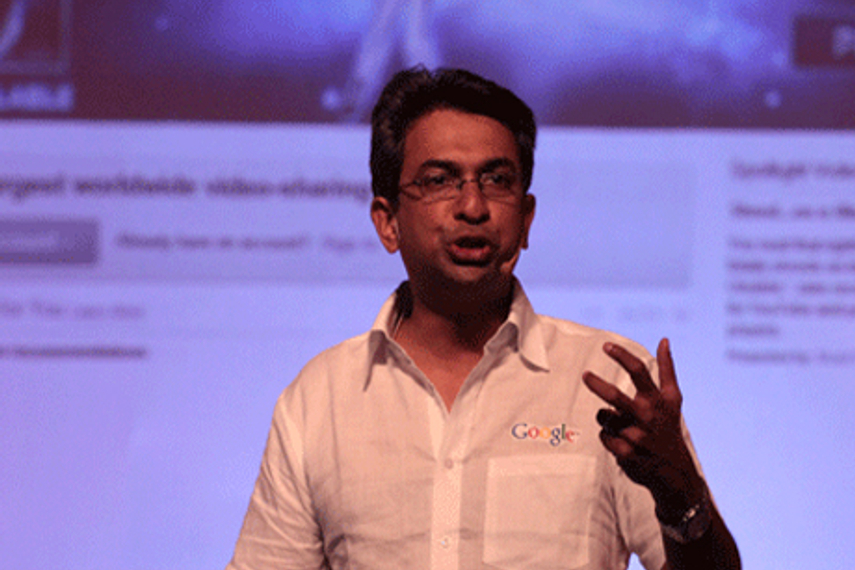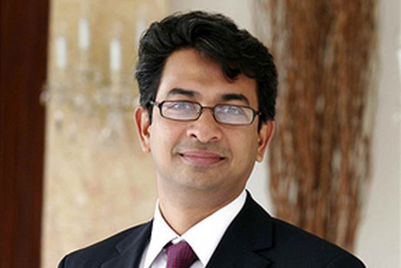
Rajan Anandan, managing director, Google India was one of the speakers on the opening day of the knowledge and seminars at Goafest 2011. Anandan presented his thoughts on the emergence of digital as medium in the country and how display advertising has evolved to present advertisers with multiple opportunities of engaging users.
Starting his presentation by pointing out that the advertising agencies do not think display advertising to be sexy and smart, he noted that one question the industry grapples with is the number of Indians online. Sharing some data on the number of internet users across India, Anandan informed that over 100 million Indians are online and spend an average of 16 hours per week on the internet. He also pointed out that a substantial chunk of internet users’ access internet from outside their homes.
He added, “The Indian online advertising revenue was around Rs 1000 cr in 2010, and will be around Rs 1500 cr by the end of 2011. With the kind of growths seen in this space, online advertising would possibly be worth around one billion dollars by the end of 2014.”
Anandan highlighted that Google has lot more to offer than just a search engine and has been focusing on the display advertising segment. “We have released over 20 new products or feature in this space over past eighteen months itself,” he added. Pointing out the factors that make display advertising “smart” and “sexy”, Anandan listed out video, mobile, targeted advertising and metrices as the four key elements.
Talking about the video and rich media content on offer, Anandan revealed that the total content produced on YouTube in the last four months is higher than the content collectively produced by the four largest production houses in the US since 1948. Noting that YouTube could be considered as the one of the largest mediums for consumption of English language content, he informed that there are 20 million unique YouTube users from India which he is expecting to reach to somewhere around 25 to 30 million users by end of this year.
Citing examples of some brands that used YouTube extensively as an advertising platform, he pointed out that live streaming of audio and video content is possible on display ads available with them thus making it more engaging and interactive.
According to Anandan, in 2010, over 40 percent users are accessing internet over their mobile phones. “This is a substantial number of users accessing the medium, and we believe that these users will be many overlapping users accessing internet on other mediums. However, with the kind of growth seen in the mobile internet space, display advertising will manage to make an impact in the medium.” He cited the example of a campaign for Kerala Tourism which was adapted for all mobile platforms including smartphones and tablets where the campaign delivered a click-through rate of around 10.5%.
He also highlighted the importance of targeting of display advertising and reach users based on their current interests and how re-marketing is possible on the medium, where certain ads can be displayed to the user across websites based on his interest levels.
Pointing out that YouTube has turned out to be as the world’s biggest focus group, he said, “Brands and marketers can use the measurement tools on offer to test their video content among the audiences across demographics without substantial investments. The metrics on offer can provide data on the different profiles of viewers watching the content as well as even map their interest levels on a timeline of the video to understand the peaks and lows in interest levels.” He cited the example of a Japanese television ad that was released on YouTube before it went on-air to gauge consumer reactions.
Concluding his presentation, Anandan predicted that display advertising is going to become extremely popular in the years ahead. "The display investment with Google increased by 92 per cent in the past year."


.jpg&h=334&w=500&q=100&v=20250320&c=1)
.jpg&h=334&w=500&q=100&v=20250320&c=1)


.jpg&h=334&w=500&q=100&v=20250320&c=1)

.jpg&h=334&w=500&q=100&v=20250320&c=1)


.jpg&h=334&w=500&q=100&v=20250320&c=1)



.jpg&h=268&w=401&q=100&v=20250320&c=1)
.jpg&h=268&w=401&q=100&v=20250320&c=1)
.png&h=268&w=401&q=100&v=20250320&c=1)


